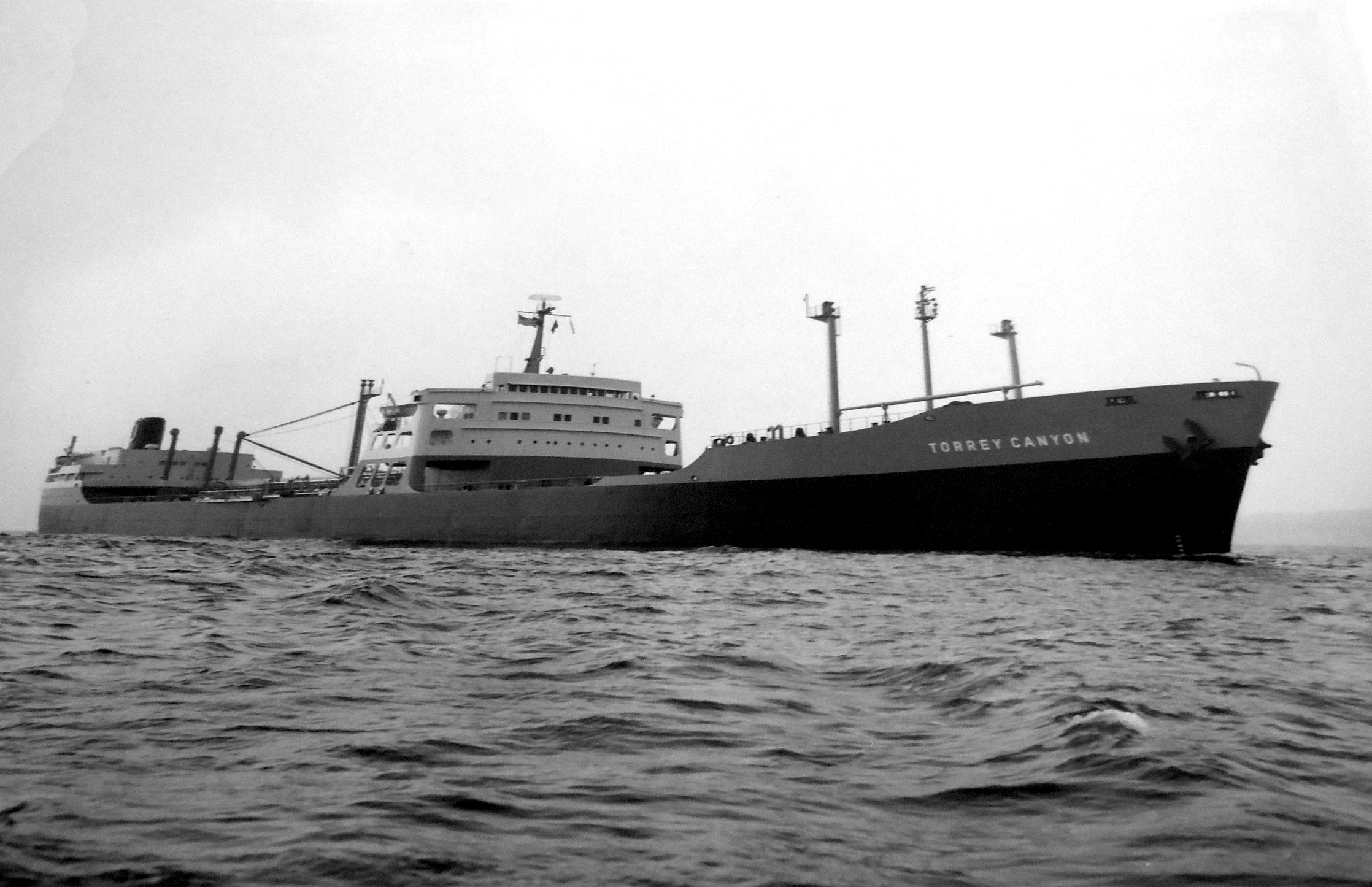The disaster of “TORREY CANYON” year 1967
On 19 February 1967, Torrey Canyon left the Kuwait National Petroleum Company refinery, at Mina, Kuwait (later Al Ahmadi) on her final voyage with a full cargo of crude oil. The ship reached the Canary Islands on 14 March. From there the planned route was to Milford Haven in Wales.
Torrey Canyon struck Pollard’s Rock on Seven Stones reef, between the Cornish mainland and the Isles of Scilly, on 18 March. It became grounded and, several days later, began to break up.
In an effort to reduce the size of the oil spill, the British government decided to set the wreck on fire, by means of air strikes from the Fleet Air Arm (FAA) and Royal Air Force (RAF). On 28 March 1967, FAA Blackburn Buccaneers from RNAS Lossiemouth dropped 1,000 pounds (450 kg) bombs on the ship. Afterwards RAF Hawker Hunter from RAF Chivenor dropped cans of jet fuel (kerosene), to fuel the blaze. However, the fire was put out by high tides and further strikes were needed to re-ignite the oil, by FAA de Havilland Sea Vixens from RNAS Yeovilton and Buccaneers from the RNAS Brawdy, as well as RAF Hunters of No 1(F) Sqn from RAF West Raynham with napalm. Bombing continued into the next day, until Torrey Canyon finally sank. A total of 161 bombs, 16 rockets, 1,500 long tons (1,700 short tons) of napalm and 44,500 litres (9,800 imp gal) of kerosene were used.
Attempts to contain the oil using foam-filled containment booms were largely unsuccessful, due to the booms’ fragility in high seas.
BST RGDS
webmaster
